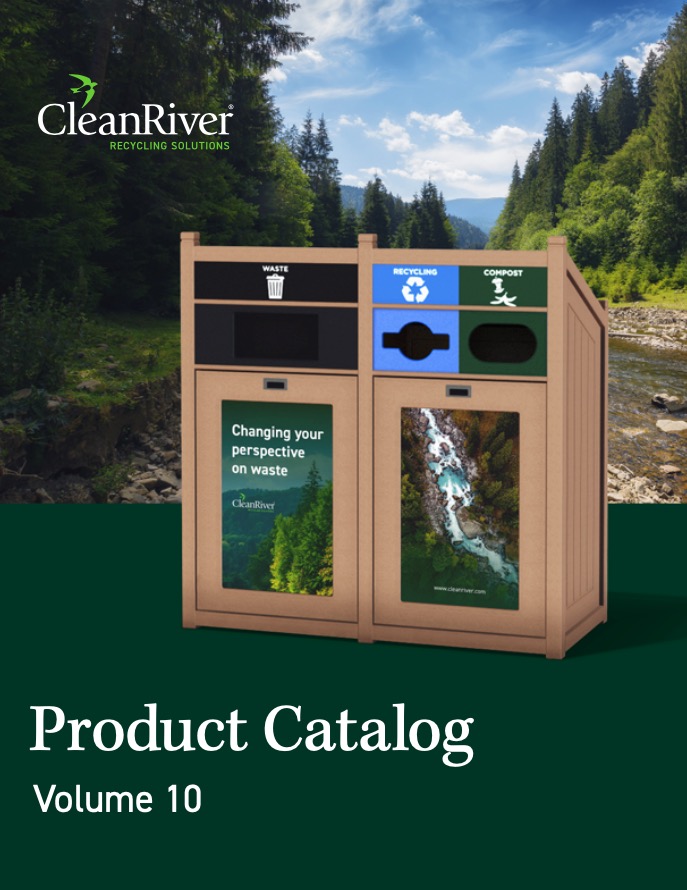Share
For over 30 years, CleanRiver has held a firm belief that everyone should recycle… but after meeting Hillary Scanlon in 2017, we were faced with the question; CAN everyone recycle?
Hillary Scanlon is an exceptional 25-year-old who has dedicated the last 4 years to making recycling more accessible. She is challenging the notion that recycling, although it is everyone’s social responsibility, is also a privilege.
Hillary is legally blind and her visual impairment has brought to light the fact that being able to recycle one’s waste is something most of us take for granted. In fall 2017, as a student at Wilfrid Laurier University, Hillary reached out to CleanRiver to pitch her project “Sustainability Through An Inclusive Lens”. CleanRiver began working with Hillary and STIL labs to develop recycling solutions for everyone: “How can we design recycling programs that can be effectively used by people of all abilities?”
Fast forward to 2021 and Hillary has brought her vision to life and officially launched a solution to accessible recycling bins: The WasteFinder. CleanRiver is proud to partner with Hillary and STIL Solutions to help promote inclusivity and accessible waste disposal. We sat down with Hillary once again to discuss:
- Her recent WasteFinder product launch
- Her goals/challenges
- Next steps
“A lot has happened since 2017 when you kicked off this accessible recycling solutions project. What has transpired between now and then?”
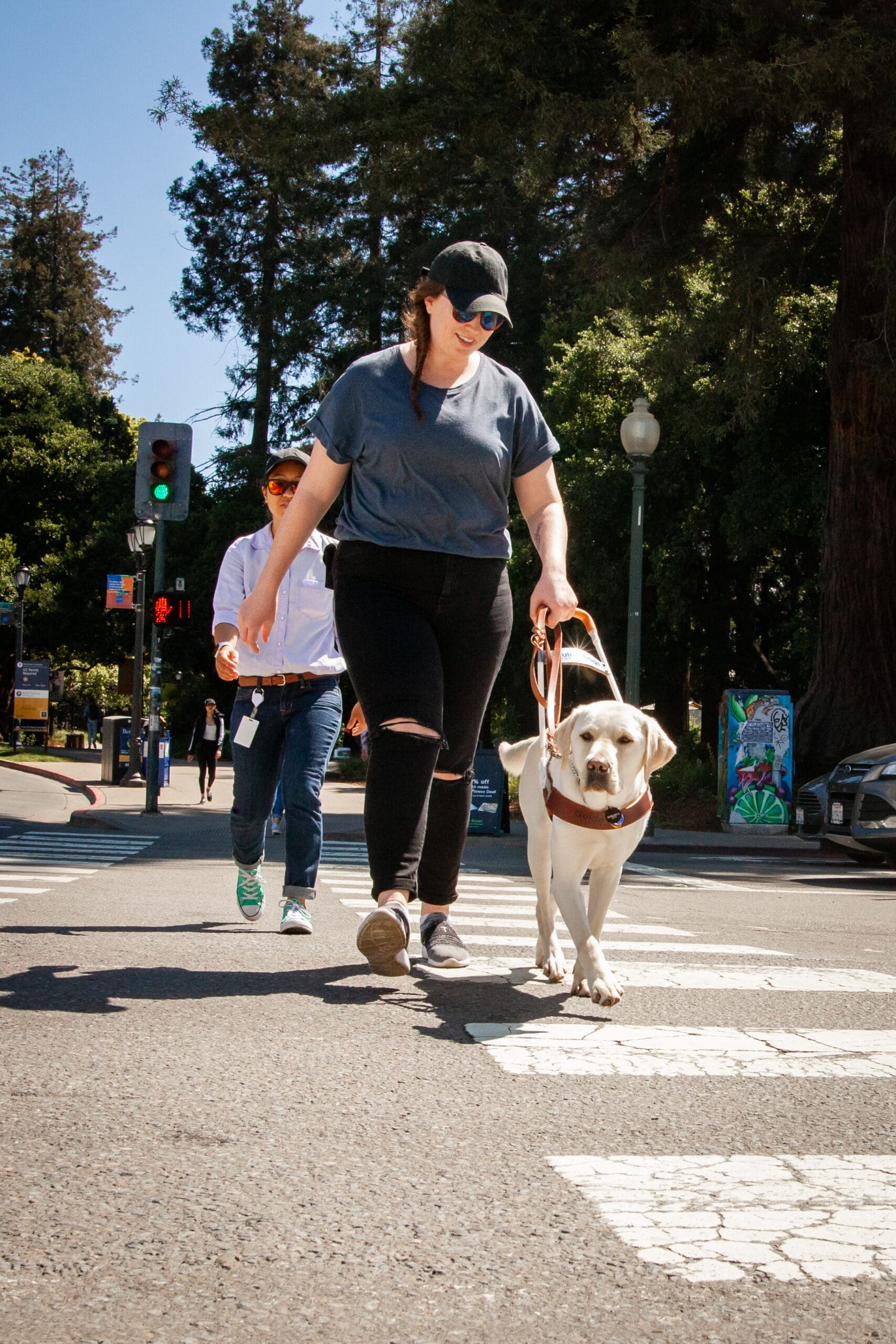
Probably one of the biggest changes is that I have completely lost all vision (over a year ago now). But I have become a lot more comfortable and confident since.
I got my first guide dog, Margarita, in 2019 and she has been absolutely life-changing. I can’t even imagine life without her now and how she fits into every aspect of my life. Just talking about her I get very emotional.
When we started the Initial design labs in 2017 we were focused on the problem and didn’t end up focusing on a solution until later. The recycling solution we developed was the early version of the WasteFinder prototype.
“What is the WasteFinder and How Does it Work?”

The WasteFinder is a two-part system that provides both tactile and visual information to assist individuals with disabilities to independently and effectively dispose of their waste in public spaces.
The Vicinity Indicator
The Vicinity Indicator surrounds the surface area of the waste disposal unit. It lets individuals know when they’re within a certain distance of the commercial recycling bins. It can be felt distinctly underfoot even when using mobility devices.
The Stream Indicators

Once in the vicinity of the accessible recycling bins, the Stream Indicators help the user determine where to place their waste using raised symbols on the floor, so the user never needs to touch a commercial recycling bin in search of braille or other tactile indicators, or get close enough to the waste disposal unit to read its signs. The Stream Indicators also use simple shapes that are easily detected underfoot or through a mobility device.
We installed the first prototype at the CNIB headquarters for testing and feedback and modified it to make it more accessible and inclusive.
The shapes were originally at a 90-degree angle but are now more contoured. The outline is representative of the shape now. AT CNIB, the Custodial staff found that it was diverting more waste from landfills and it was effective.
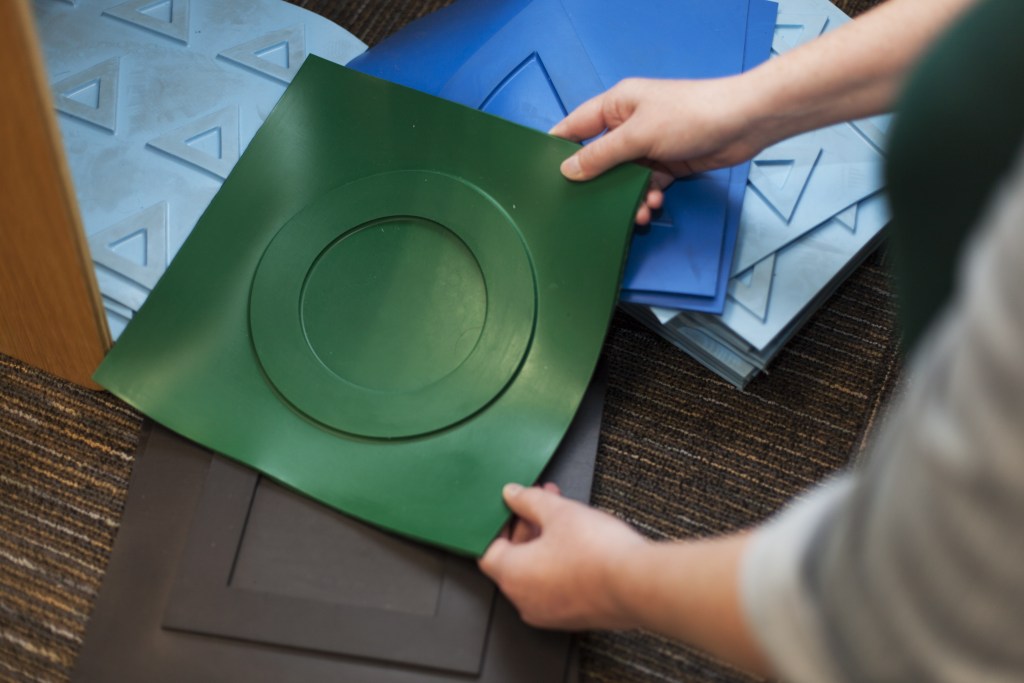
We worked hard to find a manufacturer. I was very adamant to avoid having it made overseas and wanted to maintain sustainability in all aspects of the business. Finally, we found Uni-Spray Systems (a local company in Cambridge, ON) in early 2019.
After that, we put our focus into looking for different opportunities to implement the product. But then the pandemic hit.
Since then, we pivoted the business and expanded the products to become inclusive social distance indicators which gained some traction. But I’m excited to be pivoting back to sustainability and recycling solutions.
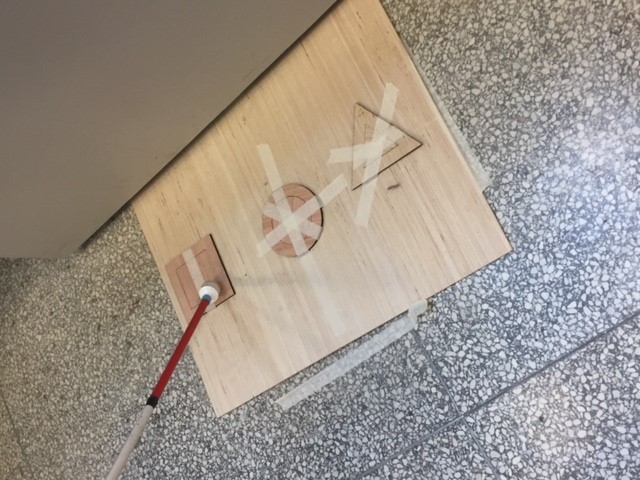
“What materials is the WasteFinder made from?”
It’s made of vinyl, so it’s extremely long-lasting and can be used indoors and outdoors. I’m currently working to develop a protocol for customers to recycle old Waste Finders.
“In your own words what is the STIL mission?”
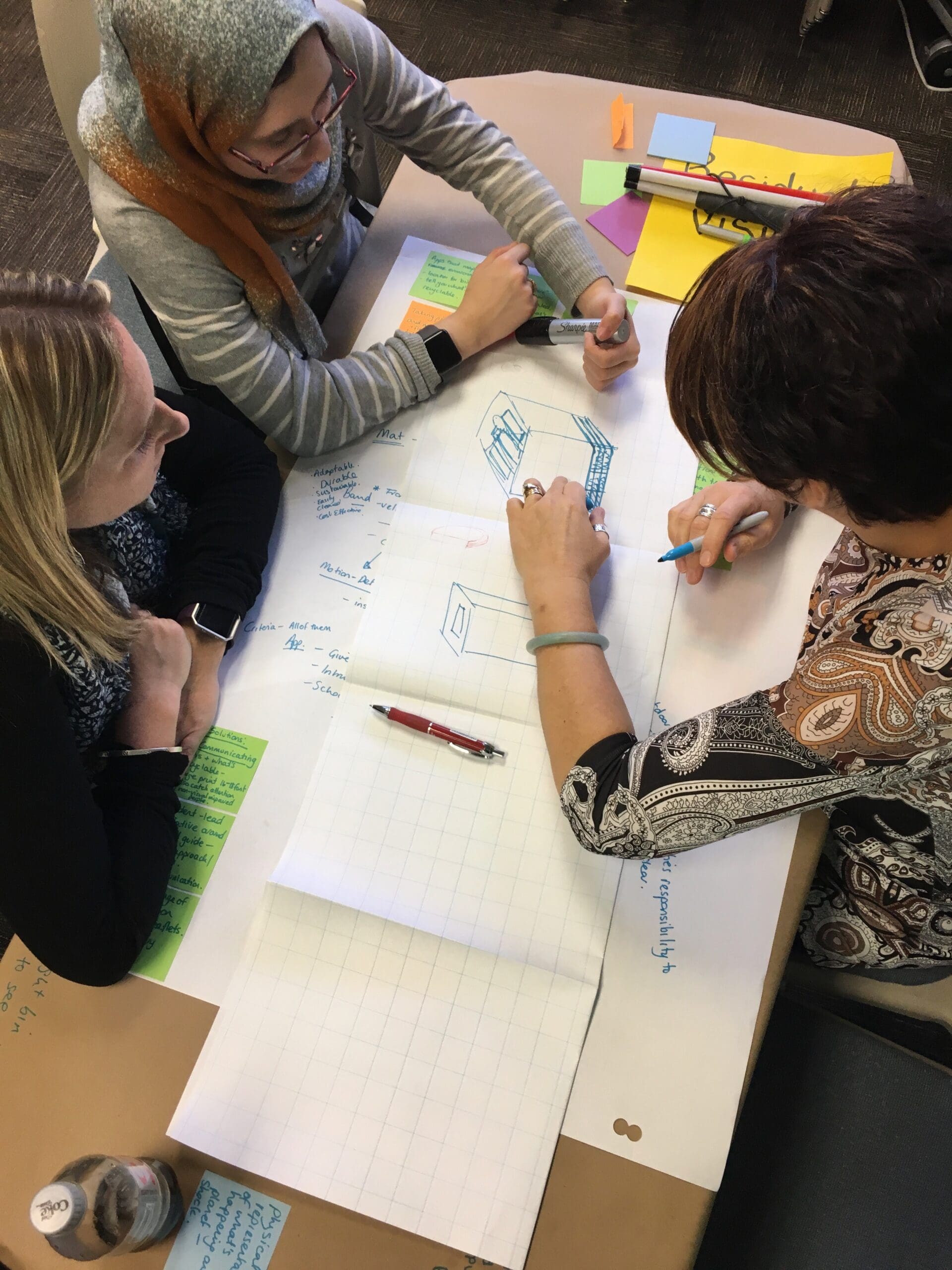
A social enterprise to enable and empower people with disabilities to find and dispose of their waste properly and effectively.
I’m really looking to extend our impact and reach. We are currently working with the Ontario and federal governments on their accessibility strategy. I would love the Waste Finder to be similar to the mandatory accessibility protocols at every cross-walk. So, similarly, the goal is that all commercial recycling bins would eventually be retrofitted with the Waste Finder system.
“What are the next steps for STIL and the WasteFinder?”
We already have over a dozen in Ontario and would be looking to expand our impact and client base. To do this, we will be looking to grow our team and acquire additional funding.
“What are your short-term goals and long terms goals?”
Short Term Recycling Solutions:
- grow our team
- build our brand and reputation
- share our story
Long Term Recycling Solutions:
Ultimately, I would like the WasteFinder to be part of accessibility legislation such as the Accessible Canada Act, the Accessibility for Ontarians with Disabilities Act, the Americans with Disabilities Act, etc.
“What is involved in a full roll-out of an inclusive recycling program for say a campus? Communication piece, community support? Etc.”
A full roll-out of an inclusive recycling program on a campus would first involve an evaluation of the needs of that particular campus. We want to ensure that the product enables people with disabilities to dispose of their waste, so all individuals can be stewards of the environment.
After the needs have been identified, we would look at developing an implementation plan together. This would involve determining the number of WasteFinders needed for their space, and co-creating an education and awareness campaign.
We also offer an optional community ambassador program where the client hires an individual from the area who experiences barriers to traditional forms of employment (e.g. a person with a disability). This individual would act as a touchpoint between the campus and STIL Solutions to answer any questions about the product.
They would also receive training on how to conduct a waste audit, and would conduct this waste audit prior to installation of the WasteFinder and 6 months after its installation. The client would hire the individual for $600; $500 of which will be provided to the Community Ambassador as a stipend for their work. The remaining $100 goes to STIL Solutions to cover some of the costs associated with training this individual.
“Ideally how would someone with a visual disability know where to locate the recycling and waste containers?” (Is there a solution for this yet?)
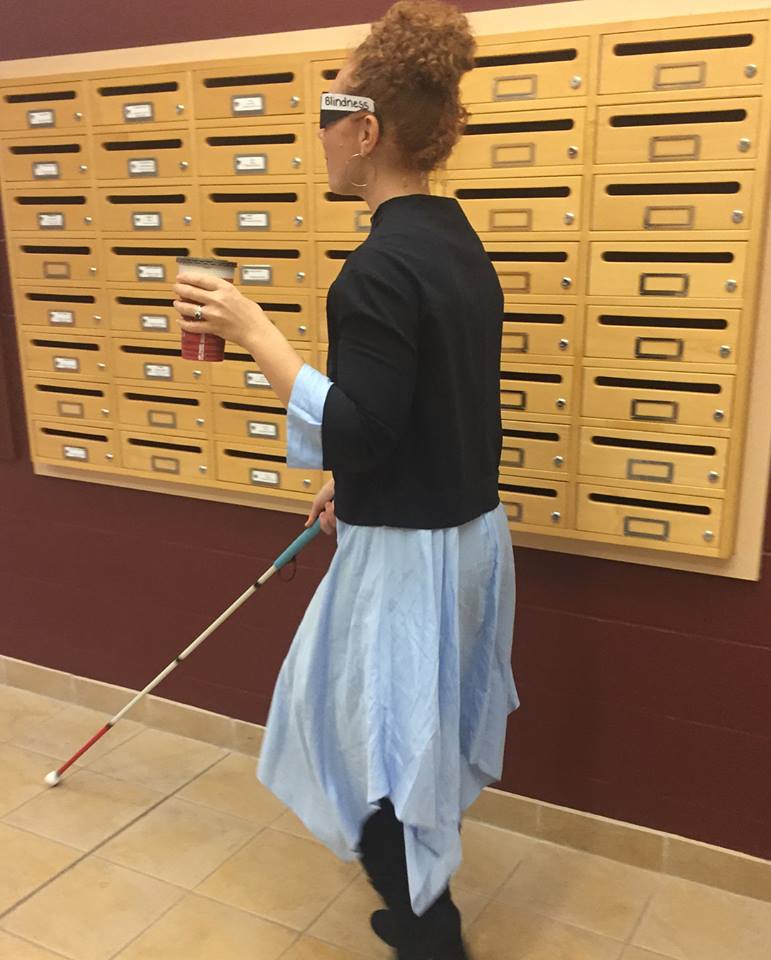
I will actually be publishing a blog through Guide Dogs for the Blind in the Spring that describes this.
“What has been the biggest obstacle in launching this product/ project?”
COVID-19 has certainly been a major barrier but another obstacle has been educating people about the product and the benefits it can have on their community. This is because WasteFinder is a new product and concept. Most people haven’t thought about the fact that most recycling solutions are inaccessible, so we have to educate our clients on the need for this type of product.
“What are some challenges that may arise for anyone interested in making their recycling program more inclusive?”
A major barrier to accessible recycling programs is that most people do not realize that the current system is inaccessible. Therefore, a lot of our work revolves around education and awareness to ensure that our client not only understands the need for an inclusive recycling program which helps to:
- divert waste from landfills
- make your space more accessible
- implement recycling programs
But it’s also difficult to ensure clients are comfortable with all aspects of the implementation.
To mitigate these anxieties, STIL Solutions provides education and awareness materials and training on how to use them if required/desired.
CleanRiver is a proud partner of STIL Solutions and the WasteFinder Solution. If you are interested in learning more about how to make your recycling program more inclusive and accessible please contact one of our sustainability experts today for more information.
______________________________________________________________
Looking for more recycling program tips? Check out these other blogs:
- The Quest to Start an Inclusive Recycling program
- CleanRiver CEO Bruce Buchan on “Why I Launched the LeanStream”
- 3 Ways to Increase School Recycling
CleanRiver Recycling provides a variety of innovative, flexible, and customizable recycling solutions. Start saving money today with our green recycling programs.
If you have additional questions that weren’t answered in this blog post please call us at 1-866-479-4038 or email solutions@cleanriver.com


